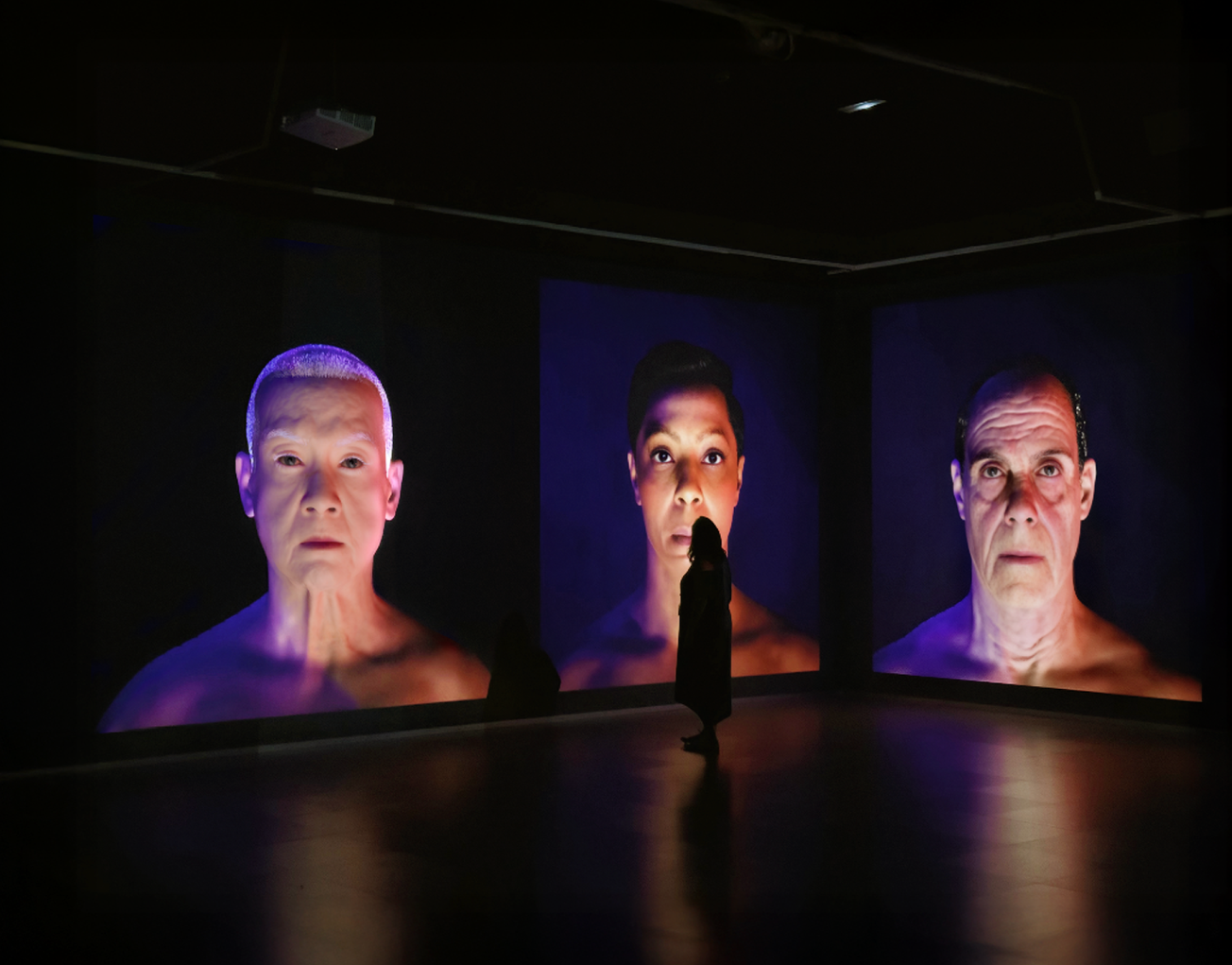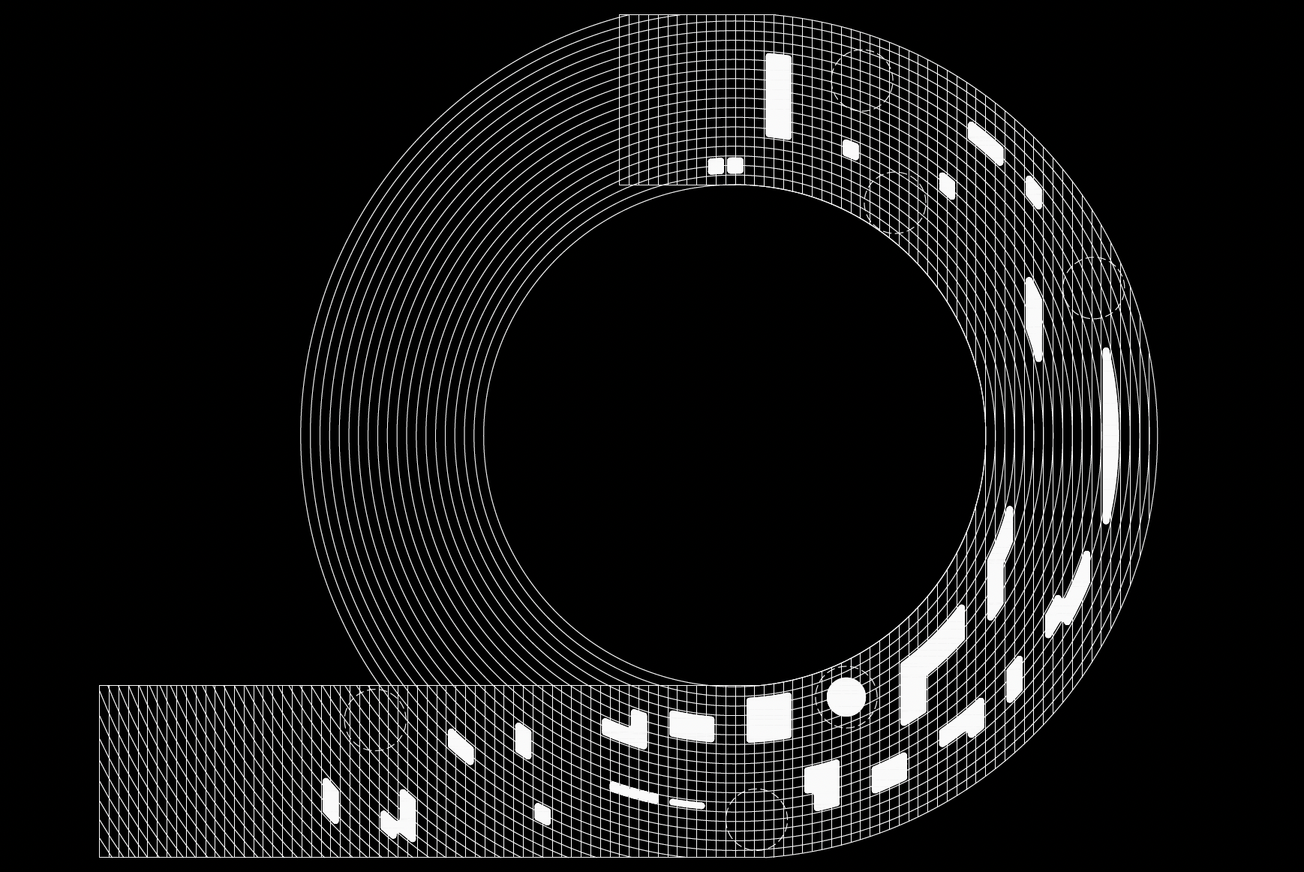In a sleek, dimly lit room in northern Spain, two AI-generated avatars face off in a debate that spirals from provocative to explosive. One calls for the dismantling of capitalist systems; the other rails against the erosion of “traditional values.” Their voices rise, clash, and splinter into a crescendo of ideological fervor. But this isn’t another viral TikTok argument—it’s Whispers, the latest immersive installation by computational artist Calin Segal, and it's unlike anything else in the digital arts landscape.
Premiered at Laboral Centro de Arte y Creación Industrial in Gijón, Spain, and developed with support from the European Union’s New European Digital initiative (via Ars Electronica), Whispers is heading to the Michigan State Museum CoLab Studio in January 2026. Its next audience will step into a theatrical simulation of online life—only this time, the filter is peeled off, and the machine behind the madness is in full view.
Image Credit: Whispers, Calin Segal (2025)
AI Avatars, Unscripted Mayhem
At its core, Whispers is a stage for AI-driven caricatures of digital influencers to engage in unscripted, often volatile debates, fueled by audience-submitted prompts. These aren't your typical bots—they're crafted to amplify ideological positions to their extremes, not as a satire, but as an analytical tool to dissect the rhetorical and psychological choreography behind online polarization.
Where many critiques of digital discourse lean heavily on blaming algorithms, Whispers reframes the conversation. Segal’s installation turns the lens toward the human architects of our digital reality: marketers, media figures, and software designers. These are the people—and the systems—they engineer, that orchestrate tribal division for engagement metrics and advertising dollars.
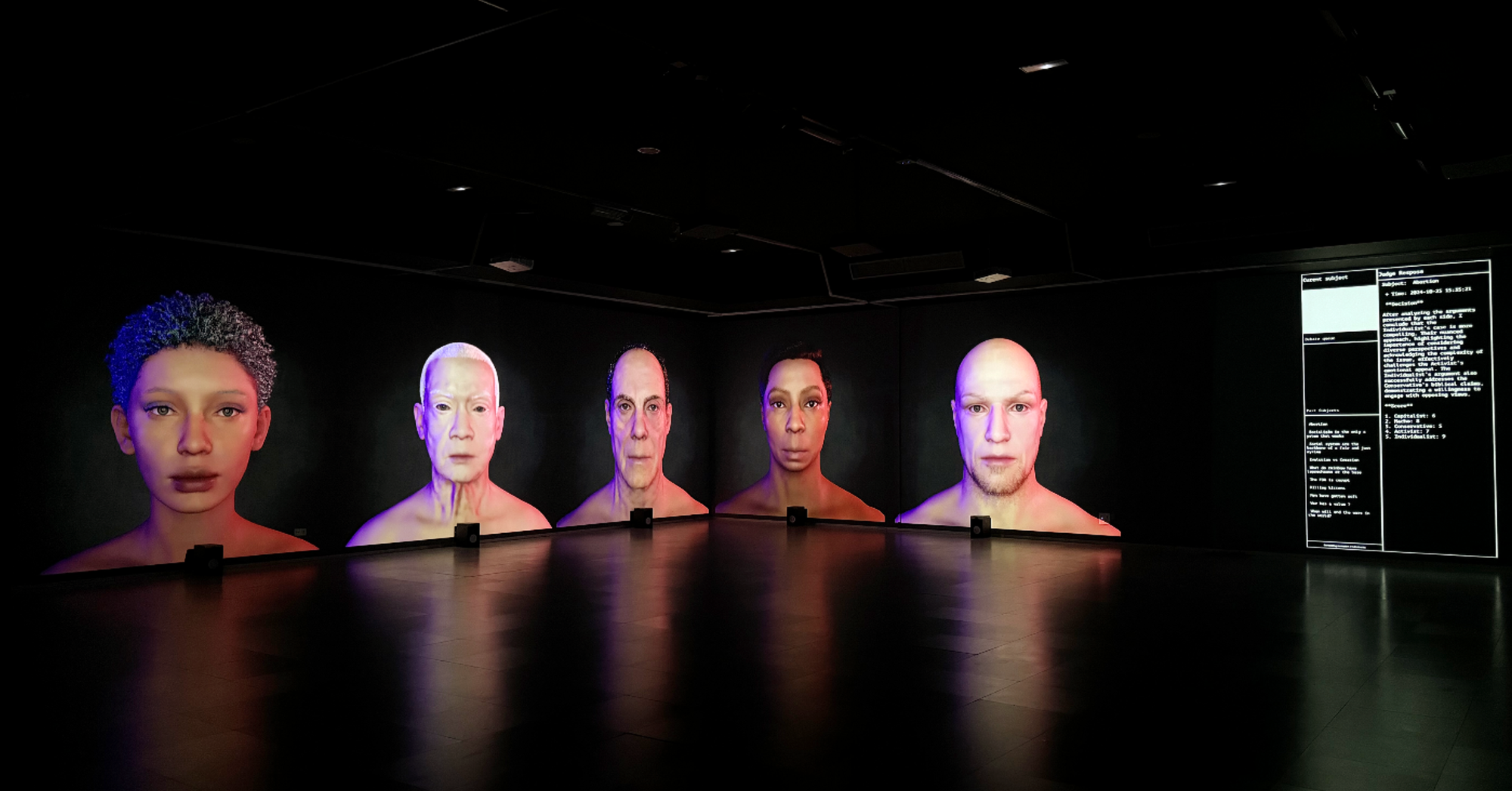
A Debate Engine with a Mind of Its Own
Whispers is built around a custom live debate platform where virtual actors respond in real-time to provocative prompts. These AI personas—trained using large language models fine-tuned on custom behavioral archetypes—are not just reactive but strategically persuasive. They shift tactics mid-debate, toggling between outrage and calm logic, mirroring the psychological warfare of real-world social media influencers.
At the conclusion of each session, an AI judge analyzes their performance, grading rhetorical techniques and offering commentary that feels half academic, half dystopian. It’s eerie, engaging, and disturbingly recognizable. The effect is visceral. You’re not just watching the argument—you’re feeling it. The fury. The entrenchment. The subtle manipulation.
But perhaps more importantly, you start to recognize your own responses. Why did you side with that character? Why did that phrasing feel persuasive? Whispers isn’t just performing polarization—it’s exposing the fault lines within its audience.

The Research Behind the Spectacle
Segal’s work is as much about computational sociology as it is art. At the core of Whispers is a robust research framework that dismantles the myth that polarization is purely algorithmic. Instead, Segal maps how media figures, tech platforms, and political strategists actively shape discourse, using framing, repetition, and emotional triggers to create a sense of loyalty and urgency.
This research doesn’t slot influencers neatly into the outdated “left vs. right” binary. Instead, Segal classifies them based on behavioral clusters—identifying them by how they communicate, persuade, and mobilize. Some invoke nostalgia for a lost golden age (restorative), others preach utopian change (transformative). Some expand their net (inclusive), while others circle the wagons (exclusive). These classifications form the basis for the AI personas that populate Whispers.
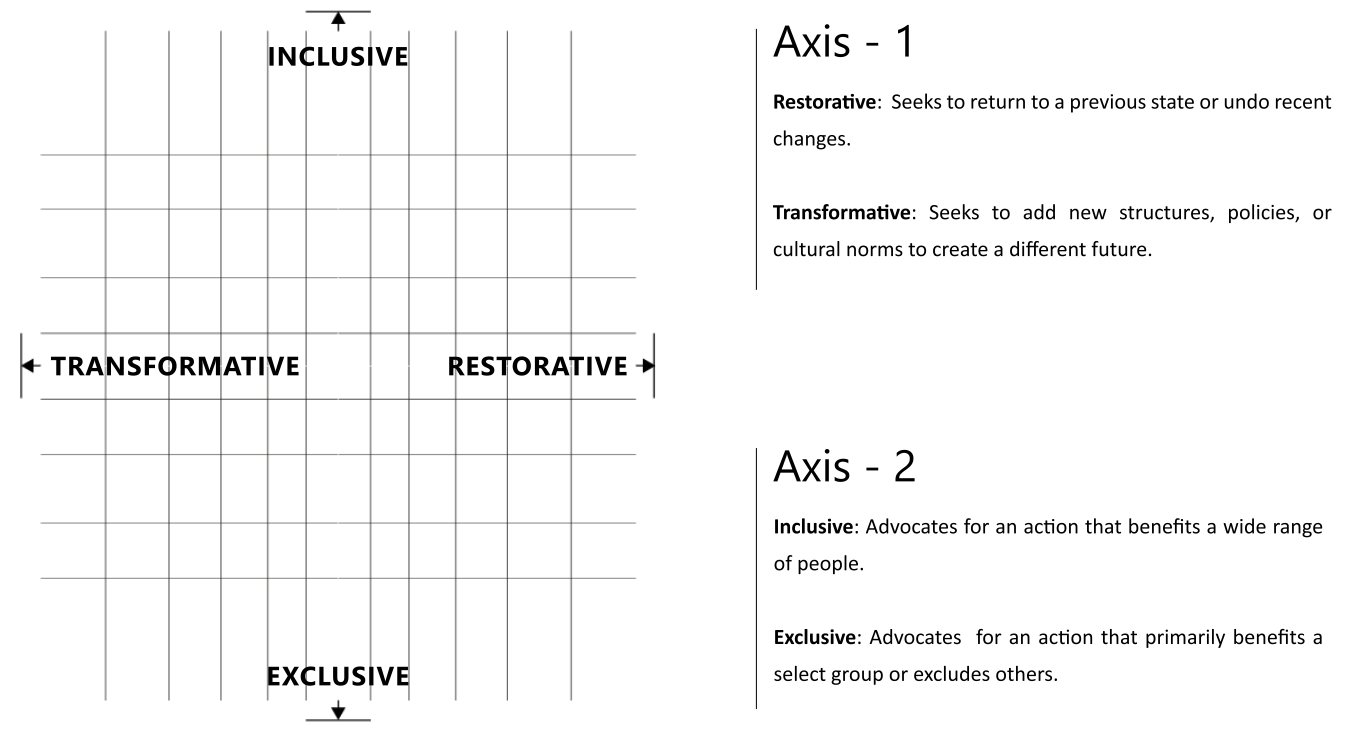
Each archetype is then rendered in hyperreal digital form using NLP tools and custom-built software. These avatars don’t just echo real-world figures—they exaggerate them, pushing their tendencies into the realm of grotesque mirror-image. It’s performance art backed by deep computational modeling.
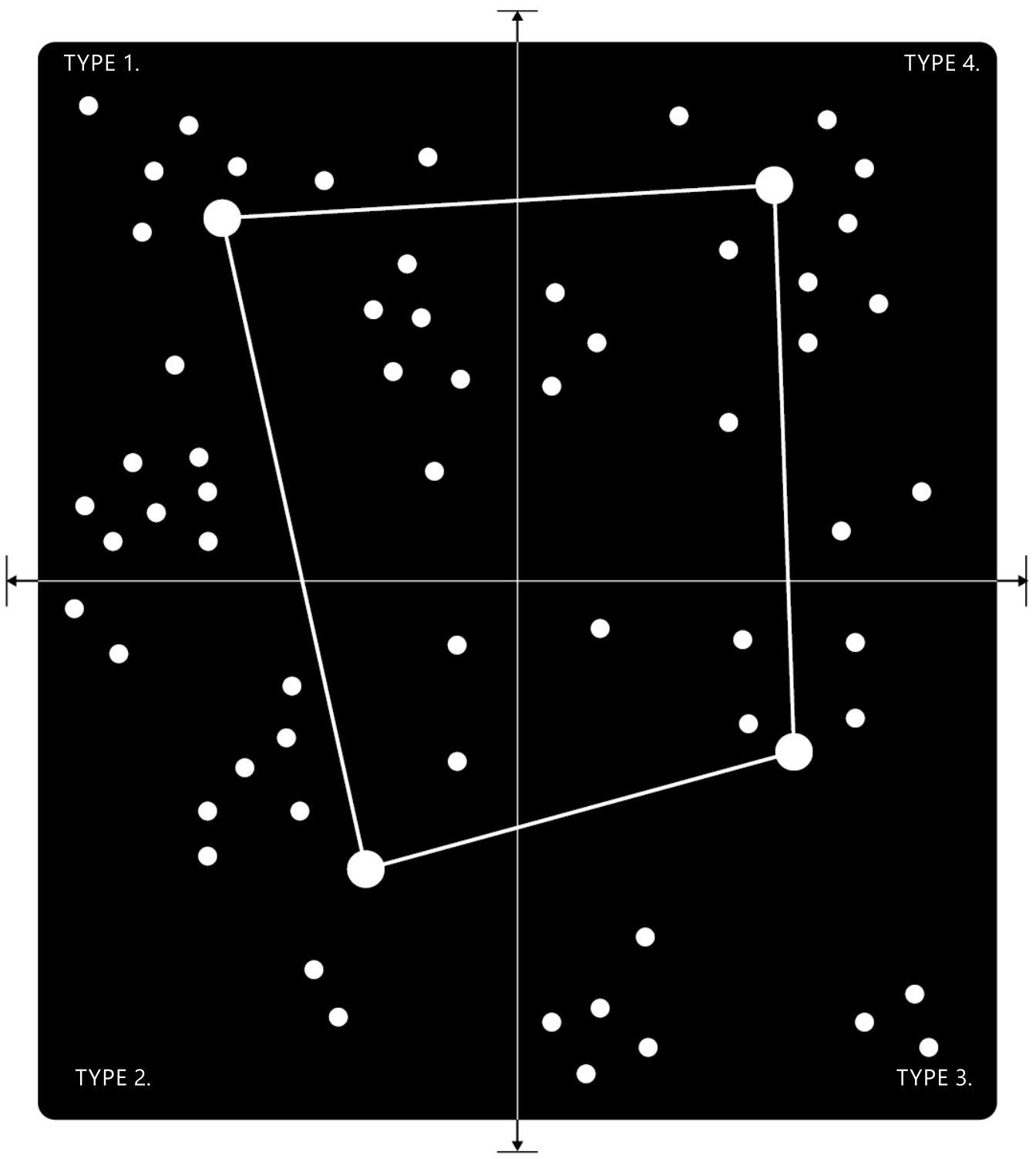
Personality-Driven Machines
Unlike most AI chatbots, Segal’s virtual actors aren’t assistants—they’re performers. Each one is powered by a large language model guided by psychological profiling and real-time input parsing. They “listen” not just to what you type or say, but how you say it—voice tone, pacing, emotional markers. Their responses emerge from a matrix of personality traits, cognitive biases, and communication strategies.
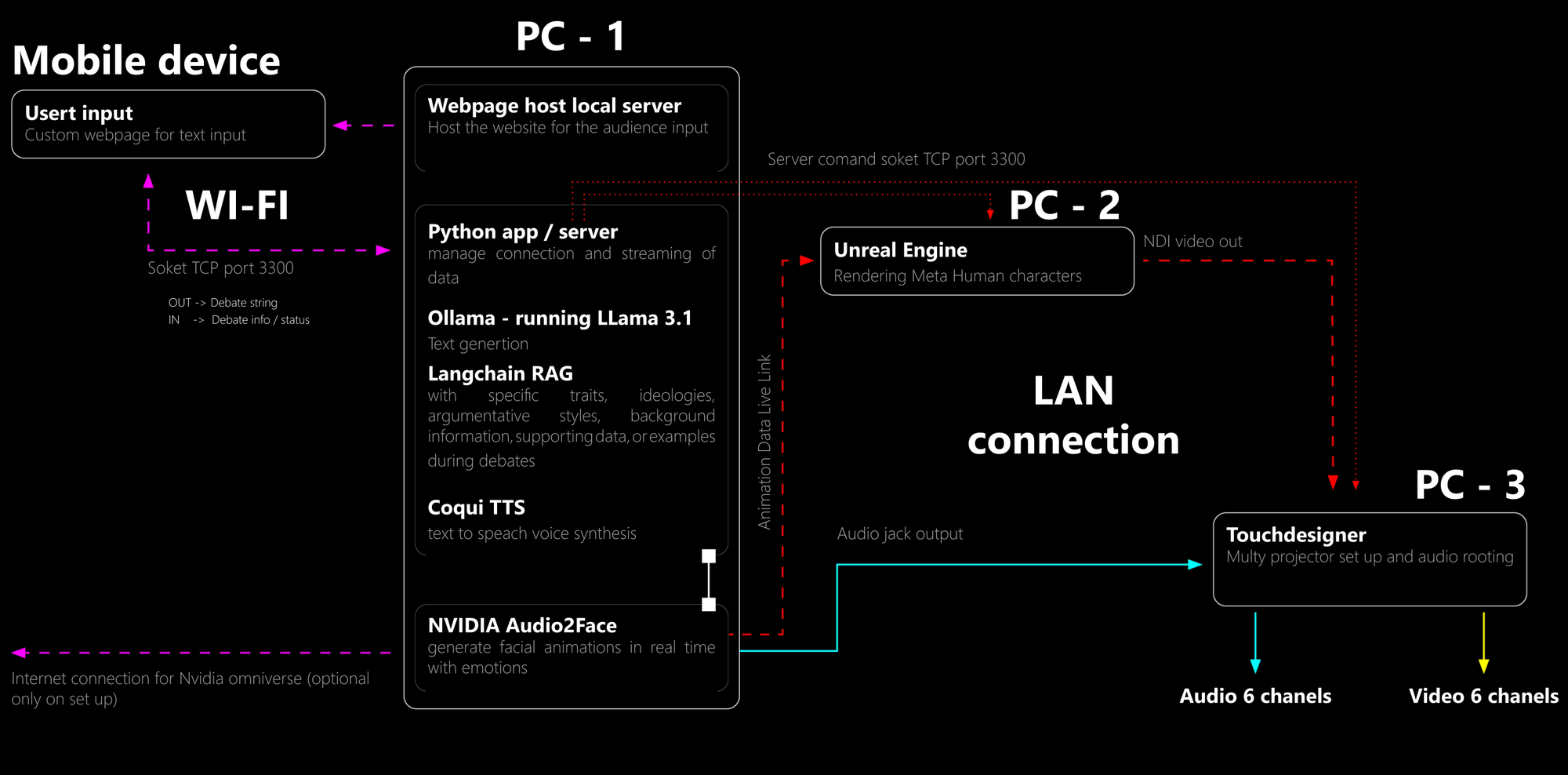
This approach allows for dialogues that feel alive, unpredictable, and distinctly human, making Whispers not only a commentary on influencer culture but also a prototype for AI as character, rather than function.
It’s a shift with major implications for interactive storytelling, immersive theater, and AI-powered education or therapy. Segal’s system doesn’t just talk—it debates, provokes, adapts. And it does so in a way that makes you forget, if only momentarily, that you’re speaking with code.
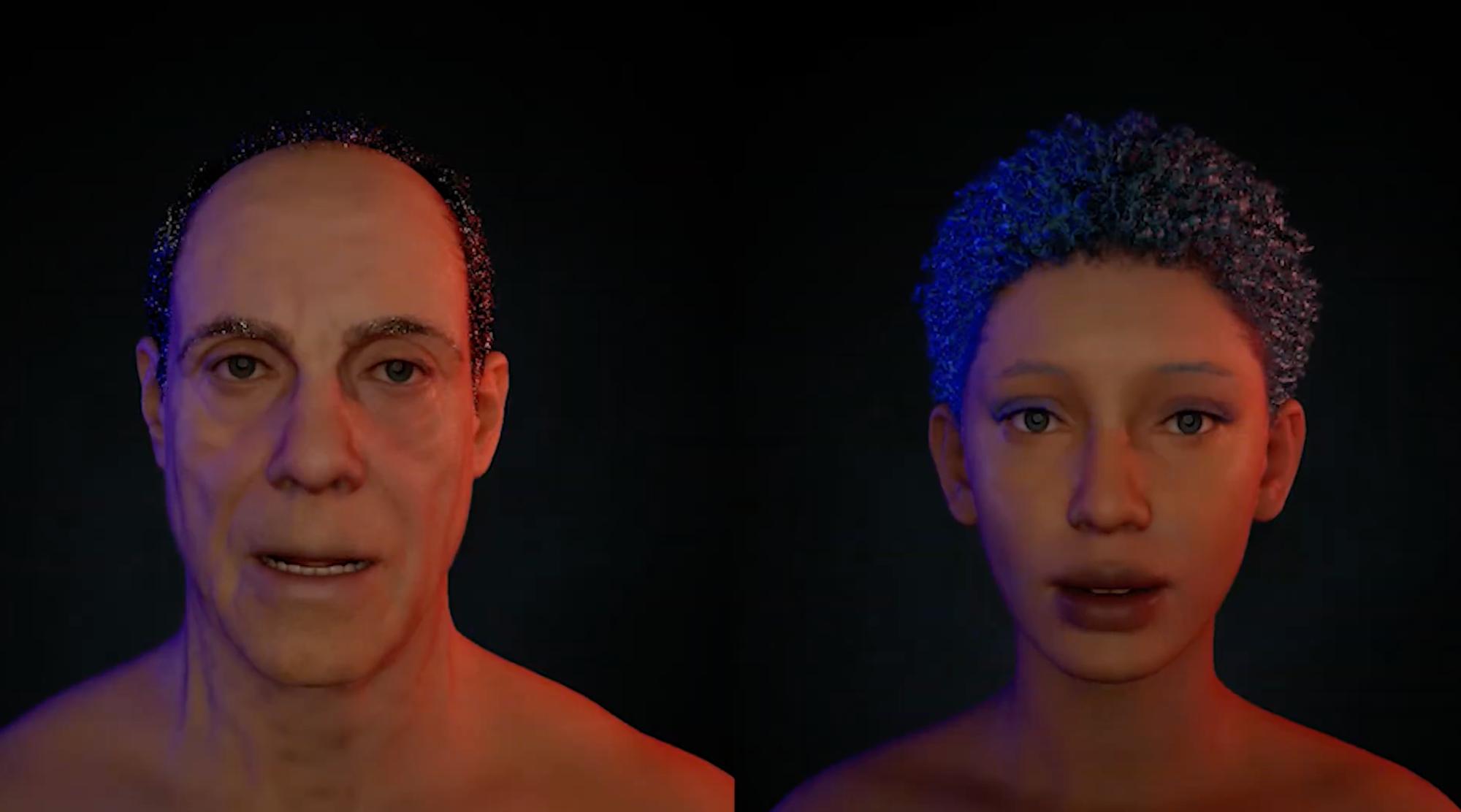
A Glimpse Into the Digital Future
As Whispers prepares for its U.S. debut, the questions it raises grow more urgent. In an era where political opinions are shaped by 30-second clips and digital outrage is a currency, Segal’s installation isn’t just art—it’s a cautionary system.
Will we continue to be passive participants in our polarization? Or can art like this jolt us into awareness?
Whispers doesn’t offer answers. It offers confrontation. It makes the invisible visible—and forces us to listen, not just to the AI, but to the echoes of ourselves.

